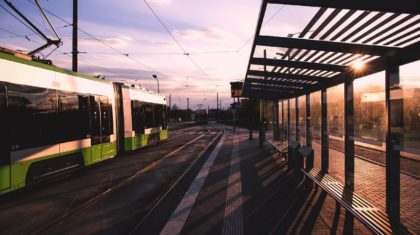#WalkBikeForward: Join us on our journey honoring key moments and people that have shaped our field as we celebrate 20 years of creating active, healthy communities.

Karen Minkel is Director of the Home Region Program at the Walton Family Foundation. She was previously Director of Strategic Planning for the city of Fayetteville, Arkansas and a public sector consultant working in London. Alta worked with the foundation on creating a trail system in Northwest Arkansas.
Active Northwest Arkansas
I’m proud to say we’ve had several breakthroughs in Northwest Arkansas. Our residents no longer see trails as purely recreational amenities. Now, trails are a fundamental part of the region’s transportation infrastructure. We couldn’t have gotten there without cooperation among multiple municipalities. Their willingness to work together helped our trails become a truly a regional system.
Investment and political will make this possible. Cities like Copenhagen, Denmark combined political will and public investment to create places that integrates multiple modes of travel and sets a model for municipalities around the world. In Northwest Arkansas, the combination of public and private investment and political will helped us create a network of more than 90 miles of trails.
One of the biggest surprises in our region has been the diversity of people who use the trail system. People of all ethnic and racial backgrounds and different fitness levels and income levels use the system at high rates. For example, in Northwest Arkansas, a higher percentage of Asians, African-Americans, and Hispanics reported using a local trail in the past 12 months than the overall regional average of 69 percent.
The moment I realized the extent of change in Northwest Arkansas was when we conducted a comprehensive trail user count. We realized our per capita usage of the system was on par with cities like San Francisco. These results show us that investing in the right infrastructure can change community culture in a very short amount of time.
Half of all Traffic Non-motorized
In my ideal world, more than 50 percent of the US population would regularly use a form of transportation other than a car by 2036. That’s why transportation funding at local, state and federal levels needs to be reallocated to support forms of transportation other than the car.
Local governments and philanthropies have to make hard decisions about how to maximize the impact of an investment. Building sidewalks, trails and street infrastructure that support active transportation should be a fundamental part of all neighborhoods regardless of income level. However, rural and suburban development patterns make these investments more expensive because the distances between activities increases. Strong urban cores will help us reduce the distance between activities, which translates into lower active transportation development cost.


